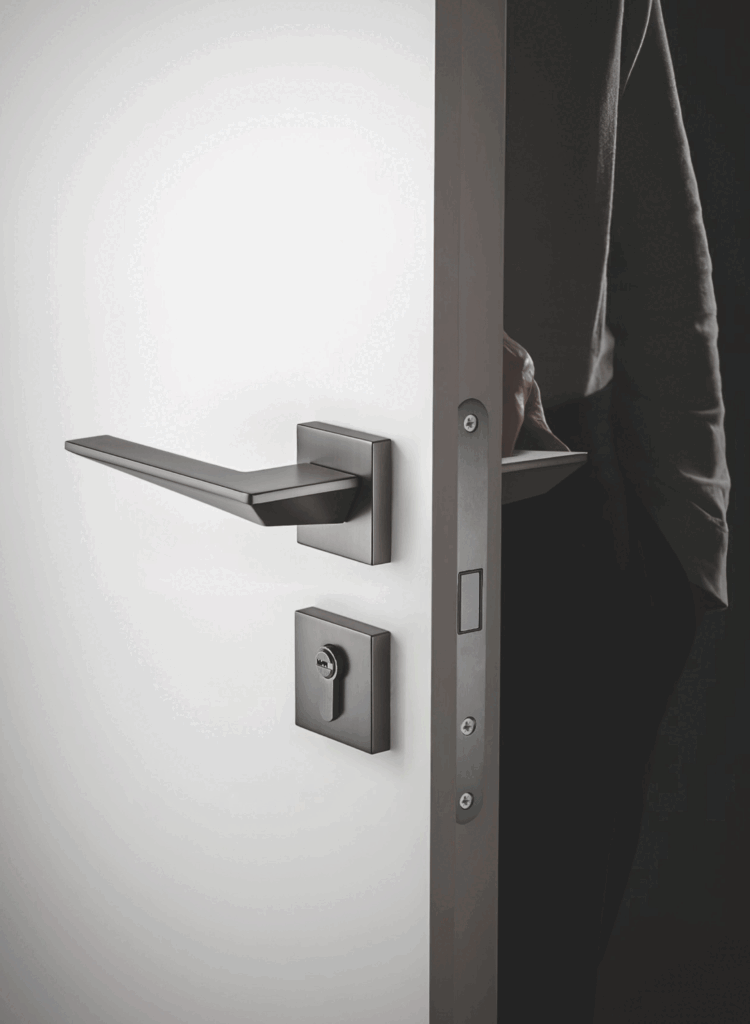Introduction
A mortise lock is one of the most widely used locking systems in Europe. It is installed inside the door leaf, offering both durability and security. Unlike surface-mounted locks, mortise locks are concealed within the door, giving a clean appearance and reliable performance.
The DIN 18251 standard defines the technical requirements for mortise locks in Germany. It specifies key parameters such as lock case dimensions, backset sizes, and the structure of the door cylinder (17×33×10 mm). This standard ensures that mortise locks manufactured by different suppliers remain compatible and reliable, no matter the application.
Why DIN 18251 Matters
DIN 18251 is the official German standard for mortise locks, published by DIN – Deutsches Institut für Normung. You can find more details directly from the DIN official website.
This standard outlines:
- Lock case dimensions for consistent installation.
- Backset sizes typically 55 mm or 60 mm.
- Cylinder dimensions standardized at 17×33×10 mm, ensuring perfect fit for Euro profile cylinders.
By following this regulation, manufacturers guarantee interchangeability, compatibility, and long-term reliability.


The Impact of DIN 18251 on Mortise Lock Design
- Standardization & Compatibility
Backset sizes are standardized at 55/60 mm, with 72 mm center distance (PCD) between follower and cylinder hole. This makes installation faster and minimizes errors. - Enhanced Safety & Durability
- Mortise locks must withstand 200,000 latch cycles.
- Latches are tested to resist up to 3000 N of force.
- This guarantees performance in both residential and commercial projects.
- Mortise locks must withstand 200,000 latch cycles.
- Fire Resistance
Locks conforming to DIN 18251 can be used in fire-rated doors, often tested up to 180 minutes (3 hours). - Security Assurance
Compatible with Euro profile cylinders that comply with EN 1303 and TS007 standards, adding resistance against picking, bumping, and snapping.
- Flexibility in Application
The standard supports different lock body types—bathroom (B hole), cylinder (C hole), and keyhole (K hole)—making it versatile for door manufacturers.

Features of DIN 18251 Mortise Locks
- High-Quality Materials
Made from steel, stainless steel, or brass components for strength and longevity. - Precision in Dimensions
Standardized backset (55/60 mm) and center distance (72 mm) for easy replacement. - Fire Performance
Tested for up to 3 hours fire resistance, suitable for both residential and commercial fire-rated doors. - Wide Applications
Available in multiple variations: bathroom locks, profile cylinder locks, security mortise locks, and master key system locks.
Installation Standards under DIN 18251
One of the main advantages of DIN 18251 is its ease of installation. With standardized dimensions, installers can use pre-defined templates to mark the door accurately before cutting. This makes the installation faster and minimizes mistakes that could compromise security or lock performance.
Installation Process (Step by Step)
📍 Step 1 – Marking the Center Line
Draw the vertical center line along the edge of the door, as well as the center line of the handle or spindle.
📍 Step 2 – Template Alignment
Place a DIN 18251-compliant template on the door and mark all required cut-out areas. This ensures holes and recesses match the lock dimensions precisely.
📍 Step 3 – Mortise Cutting
Carefully cut the mortise to achieve a snug—but not overly tight—fit for the lock case.
📍 Step 4 – Recessing the Forend
Create a recess so that the lock forend sits flush with the door edge. This maintains functionality and clean aesthetics.


Maintenance for Long-Term Performance
To ensure reliable operation, DIN 18251 mortise locks should be maintained regularly:
- Inspect for wear and tear.
- Lubricate moving parts.
- Keep internal mechanisms free from dust and debris.
👉 Proactive care extends the lock’s service life while maintaining its certified security performance.
Conclusion
The DIN 18251 standard plays a critical role in the door hardware industry. For door manufacturers, distributors, and building material supermarkets, choosing mortise locks that comply with DIN 18251 means:
- Easier installation.
- Standardized compatibility.
- Proven safety and durability.
- Compliance with European regulations.
At UMAY, we provide a full range of DIN-standard mortise locks, cylinders, door handles, hinges, and closers. All products are designed for global projects where quality, certification, and long-term performance are essential.
👉 Learn more about our mortise lock solutions here.
Share This Story, Choose Your Platform!

